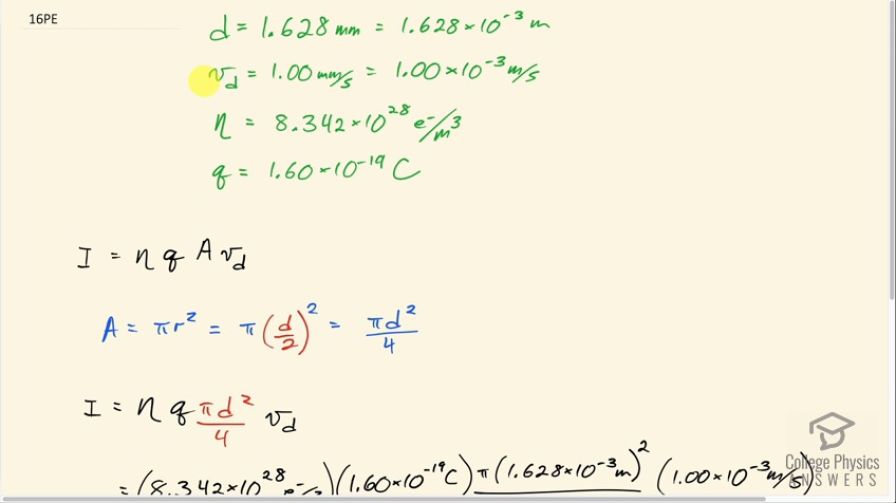Question
A 14-gauge copper wire has a diameter of 1.628 mm. What magnitude current flows when the drift velocity is 1.00 mm/s? (See Example 20.3 for useful information.)
Final Answer
Solution video
OpenStax College Physics, Chapter 20, Problem 16 (Problems & Exercises)

vote with a rating of
votes with an average rating of
.
Calculator Screenshots
Video Transcript
This is College Physics Answers with Shaun Dychko. A 14 gauge copper wire has a diameter of 1.628 times 10 to the minus 3 meters and we are told what the drift velocity of the charge carriers in it are which is 1.00 millimeter per second and the charge carriers are electrons and so the charge on each charge carrier then is the elementary charge— 1.60 times 10 to the minus 19 coulombs. We also want to know how many electrons there are per cubic meter and we look up the answer to that in example [20.3] for copper and then we can use this formula to figure out what the current is in the wire. It's the density of the charges so electrons per cubic meter, in other words, multiplied by the number of coulombs on each charge times the cross-sectional area of the wire multiplied by the drift velocity. So the cross-sectional area is π times the radius of the wire squared and the radius is half the diameter and we end up with π times diameter squared over 4 is the area so we substitute that in for A. And then we plug in numbers: 8.342 times 10 to the 28 electrons for every cubic meter multiplied by 1.60 times 10 to the minus 19 coulombs per electron, you could say, multiplied by π times 1.628 times 10 to the minus 3 meters squared over 4 and this is the cross-sectional area and then multiply by 1.00 times 10 to the minus 3 meters per second—drift velocity— and this works out to 27.8 coulombs per second, or amperes of current.
